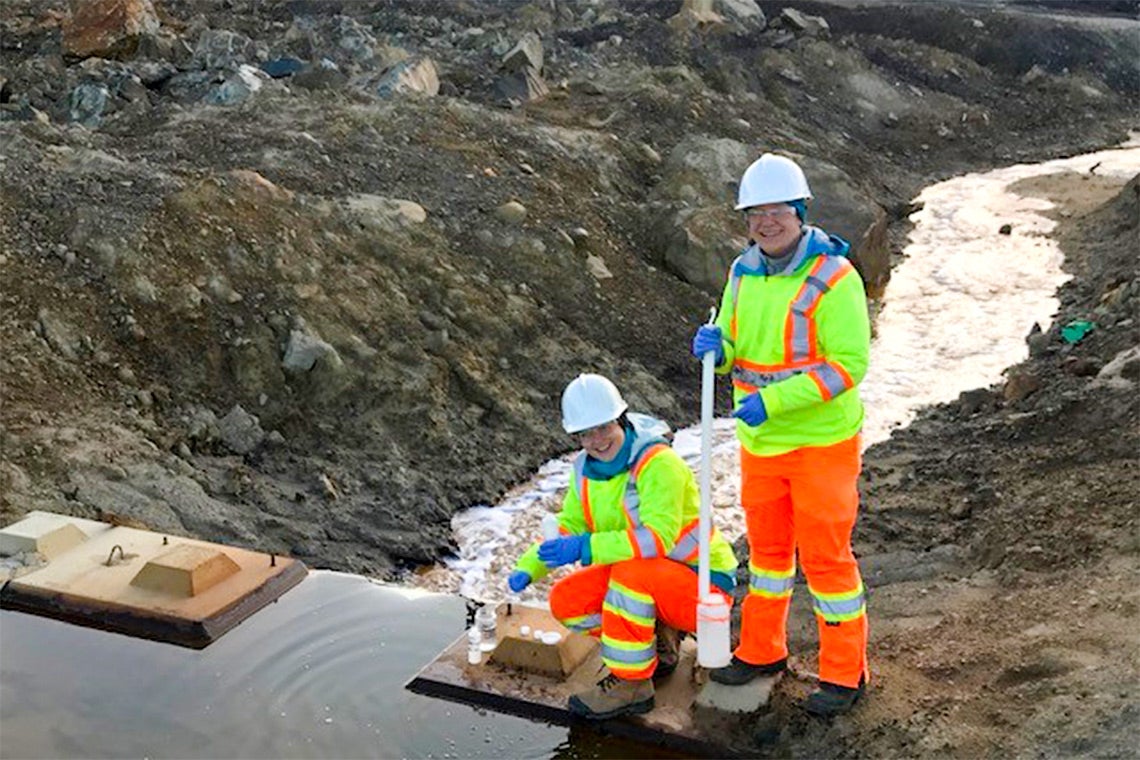
A mine straddling the border of Saskatchewan and northern Manitoba will be the first in the world to deploy an innovative new technique for monitoring and managing sulfur compounds, including thiosalts.
The strategy - co-developed by an international research team that includes researchers from the University of Toronto, Australia's Commonwealth Scientific and Industrial Research Organization (CSIRO) and Canadian miner Hudbay Minerals, Inc. - helps improve understanding of possible effects on the environment and has potentially far-reaching applications for global mines processing sulfide containing ores.
"Not only does this new method improve our data collection and help us better understand and manage our environmental liabilities, it also simplifies Hudbay's logistics and reduces analytical costs, given that this mine is located far away from commercial laboratories," says Landice Yestrau, EP superintendent, environmental compliance at Hudbay Minerals.
The global-first strategy, which recently received regulatory approval, was led by Lesley Warren, a professor in the department of civil and mineral engineering in U of T's Faculty of Applied Science & Engineering, and included Simon Apte of Australia's CSIRO and Hudbay Minerals.
Details about the process are laid out in a paper published in June 2020 in Mine Water and Environment.
"Thanks to this world-first research, we are now able to measure the total possible sulfur risk with this new method. It's clear that the previous industry standard 'thiosalts' methods under-report these risks in our effluent and receiving waters," says Shirley Neault, manager, environment and systems at Hudbay Minerals. "This is a major win for everyone."
The technique is faster, cheaper and more accurate than the current industry standard methods. This innovative in-situ environmental management method is critical due to the mine site's remote location.
Mitigating thiosalt impacts, which can cause toxicity, acidity and contamination in receiving environments if not properly managed, is a concern for mines around the world because the majority of metals come from sulfide minerals.
The Saskatchewan government's recent approval further signals the critical need to capture and measure risks associated with the long-standing issue of sulfur compounds and bolsters the industry's future water stewardship strategies.
"Now that mines can effectively track possible sulfur risks, the ability to proactively manage impacted waters is improved and environmental stewardship goals become actionable steps," says Warren.
Hudbay's 777 mine produces both zinc and copper, and is located near the town of Flin Flon, Man., which sits on the border between Saskatchewan and Manitoba.
The new "reactive sulfur" method is one of many coming out of Mine Wastewater Solutions: Next Generation Biological Treatment through Functional Genomics.
This large-scale research project, led by Warren, is funded by Genome Canada, the Ontario Ministry of Research and Innovation, and industry partners including Hudbay, Glencore Canada's Sudbury INO (Integrated Nickel Organization), Rambler Metals and Mining, EcoReg Solutions Incorporated (ERSI) and Ecometrix - along with sector agencies Mining Association of Canada (MAC), Ontario Mining Association (OMA) and Mine Environment Neutral Drainage Program (MEND).
The multidisciplinary project applies functional metagenomics, geochemistry, biochemistry and modelling to mining wastewaters to develop innovative biological monitoring, management and treatment tools.
The collaboration illustrates the power of academia and the private sector, supported by governments, to develop research-powered solutions to address complex, multidisciplinary problems that transcend borders.
"Partnering with a global, multi-institutional team has allowed us to collaborate on research priorities and generate a wealth of new knowledge accelerating real outcomes at site," says Neault. "These researchers offer tremendous expertise and together we are driving a range of biological treatments and innovations at our mines."
The Mining Wastewater Solutions Project (MWS Project) is jointly funded by Genome Canada (LSARP program), Ontario Genomics, Genome Quebec, Ontario Government (MRI, ORF-RE program) and industry mining company partners (Glencore Sudbury INO, Hudbay Minerals and Rambler Metals and Mining). The international research team includes U of T's Warren, CSIRO's Apte, Jill Banfield of the Univeristy of Callifornia, Berkeley, and Christian Baron of Université de Montréal. Industry partners also include Ecoreg Solutions and Ecometrix consulting companies, and MAC, OMA and MEND sector agencies.






